- Blog
- News
- TOURISM
[Event Info] Meeting Master Citrus Farmers in Tsunagi!
On December 11, 2022 (Sunday) and February 19, 2023 (Sunday), we conducted two hands-on programs with citrus farmers in Tsunagi, Kumamoto, called “Tsunagi Town: Meet a Master Citrus Farmer!”
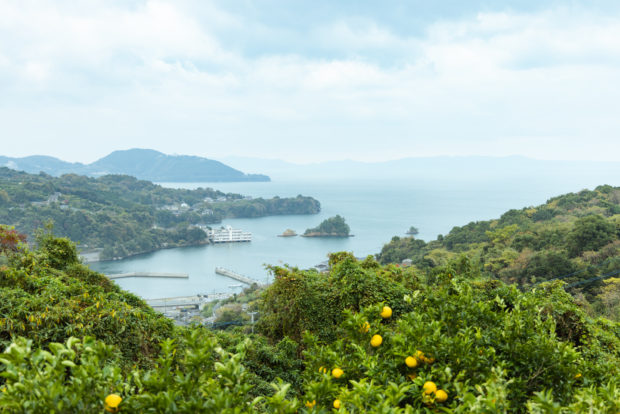
View of the former Akasaki Elementary School from the Amanatsu orange field.
Tsunagi Town is located in the southern part of Kumamoto Prefecture and has a population of approximately 4,500 people.
Since many of the town’s residents were once victims of Minamata disease, many of the farmers today practice natural farming using as little fertilizers and pesticides as possible.
“Tsunagi FARM” is a local initiative that connects healthy food, agriculture, and the environment to future generations by holding study groups, cooking classes, and practical sessions. There is also “Tsunagi Hyakkado”, a store that sells safely produced farmed and processed goods.

Tsunagi Hyakkado
Among various agricultural products produced in Tsunagi, citrus is one of the specialties. If you drive from the center of town towards the sea, you will find fields of citrus trees such as Amanatsu, Shiranui (Dekopon), and Sweet Spring dotting the mountain slopes.
Many people want to experience harvesting Tsunagi’s citrus fruits. However, since the farms are not very large and the farmers have many duties, it is difficult to accept a large number of visitors for a farm experience.
Therefore, we decided to create an experiential program that, with even just a small number of participants, would allow guests to learn about the town’s various farming efforts and participate in an exchange of ideas with farmers and create connections for the future.
This program was created through partnerships and dialogue with many parties including farmers, the Tsunagi Town Office, Regional revitalization groups, and recent newcomers to the area.
We are pleased to collaborate with Mr. Toshikazu Iwasaki, who mainly produces Amanatsu, and Mr. Yoshitomo Maruta, who mainly produces Shiranui, and introduce them as the hosts for this experience.
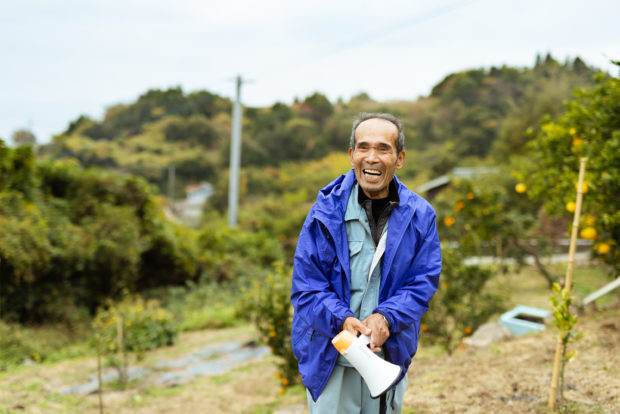
Mr. Toshikazu Iwasaki, producer of Amanatsu
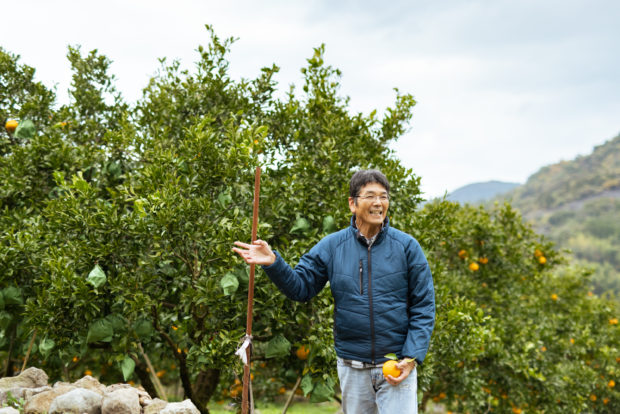
Mr. Yoshitomo Maruta, producer of Shiranui
First, we visited both Mr. Iwasaki and Mr. Maruta to listen to their stories. We toured their fields and learned about their daily work.
The most surprising thing we learned was that citrus fruits such as Amanatsu and Shiranui (Dekopon), are that they not eaten immediately after harvesting, but are instead placed in storage for several months to reduce their acidity before being sold. These fruits are usually harvested between December and January and are stored until around April and May.
We also learned that during storage, chemicals are typically used to prevent mold and rot. However, since Mr. Iwasaki and Mr. Maruta strive to use as few chemicals as possible in their production process, they let their citrus ripen on the tree for as long as possible to shorten the time needed in storage.
Allowing the fruits to ripen on the tree increases the risk of damage caused by animals, birds, frost, and cold weather. While Amanatsu are relatively less susceptible to damage because of their hard skins (though they can still be eaten by boars, badgers, and birds), we learned that Shiranui have delicate skins, which requires them to be grown with extra care. Because of this, each of Mr. Maruta’s Shiranui is covered with a protective bag.
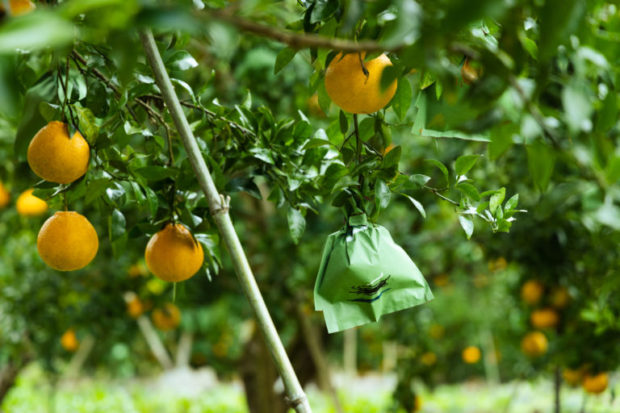
Mr. Maruta’s Shiranui in a protective bag
Each year, Mr. Iwasaki plucks the flowers from half of his Amanatsu trees. By doing this, the trees only produce fruit once every two years. This allows them to rest and stay healthy since growing citrus without using fertilizer puts a lot of strain on the trees.
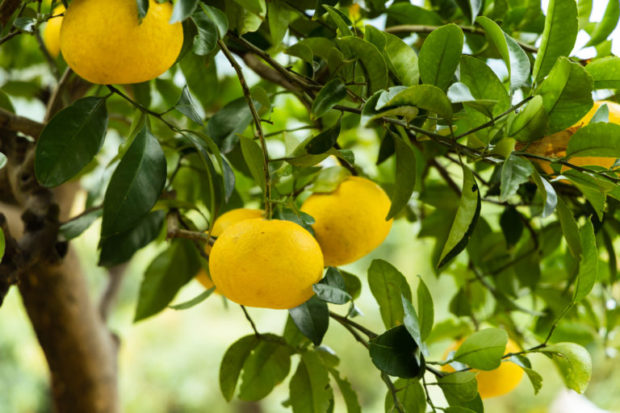
Mr. Iwasaki’s Amanatsu
Based on our findings, we decided to create a hands-on program that would allow participants to experience how much effort goes into getting citrus fruits, which are carefully grown with as little fertilizer and pesticides as possible, into their hands. Last year, we held a two-part experience of bagging in December and harvesting in February, with Mr. Maruta and local monitor participants.
Since Tsunagi Town promotes”Community Development Through Art,” participants were asked to draw pictures on the protective bags. The participants came up with the concept of “What kind of orange do you want to grow?” and drew images of their ideal fruit. Since the drawings were to be exposed to the outside elements for two months, we tested the durability of various art materials including paints, poster colors, and oil-based magic markers.
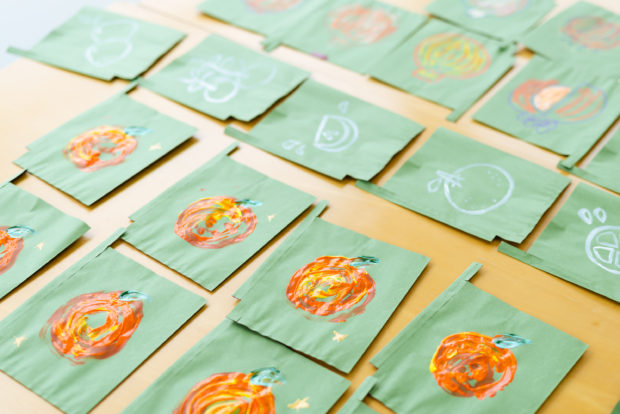
In December, everyone drew pictures of oranges on the paper bags.

We carefully hung the bags over the oranges so they would grow to be delicious.
For Mr. Iwasaki’s Amanatsu harvesting experience, we visited his farm in December and heard about how he tends to the trees. In February, we harvested the fruit and got to experience tasting fresh Amanatsu juice.

In December, we also had the opportunity to harvest experimental green papayas grown in Mr. Iwasaki’s field!
Compared to last year, this year’s citrus harvest was much lower as the area was hit by a record-breaking cold wave at the end of January which caused significant frost damage. Additionally, there was a lot of damage from boars, raccoon dogs, badgers, and birds, due to less food being available in the mountains.
When we returned to Mr. Maruta’s farm in February, we were able to see citrus peels the animals had eaten, holes they had dug in the soil, and their droppings. Some of the Shiranui we bagged had been eaten by animals or had rotted and fallen off the tree. We were reminded once again that growing citrus is a demanding job closely intertwined with nature.
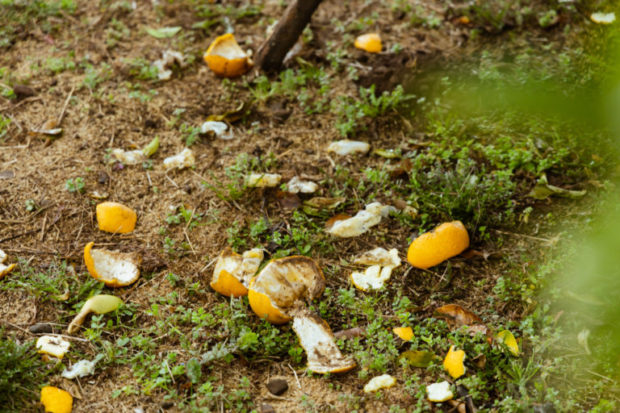
An Amanatsu orange that was eaten by a badger. “I feel sorry for the birds and animals, too,” says Mr. Iwasaki.
Participants made comments such as: “This was a very different and profound experience from ordinary orange picking,” and “I received a citrus tree from my parents, but I didn’t know what to do with it, so I was glad to be able to talk with the farmer about many things during the experience.” Others also noted, “It would be nice to spend a little more time learning more about Tsunagi Town’s efforts to promote agriculture that uses little fertilizers and pesticides.”

We were able to learn so much by actually visiting the fields and listening to the farmers.
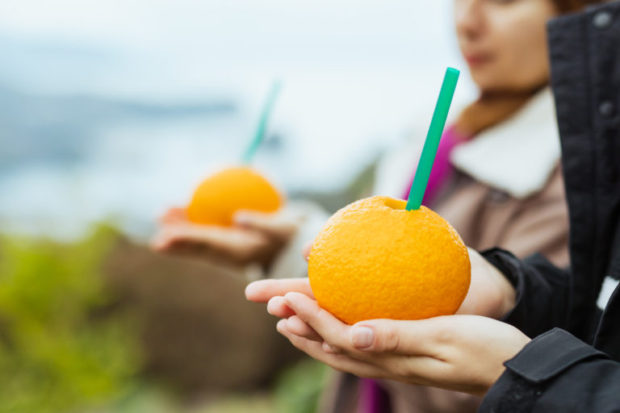
A special juicer makes fresh Amanatsu juice. The straws are made from corn, a naturally reused material.
Our goal is to take the feedback we received from participants to improve the next citrus program we will hold for the public around the end of November/December 2023. We want you to participate! We will let you know when we start accepting applications. Please let us know if you are interested.
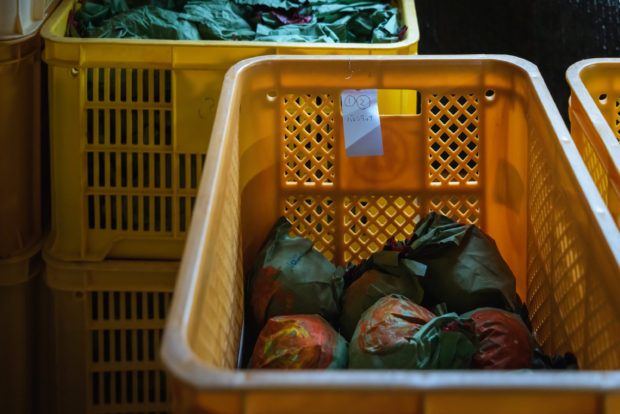
The harvested Shiranui will be sent to Mr. Maruta’s warehouse, where they will be ripened until around March / April before being shipped. We look forward to eating them!
Photo: Koichiro Fujimoto
Text: Sakurai (UNA Laboratories)
NEW
-
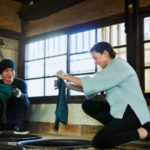
2024 Golden Week Experience Program Overview -

Inspection Report Beppu From a Different Angle: A tour of bamboo crafts and arts -
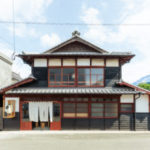
Year-End and New Year’s Holiday Business Hours -
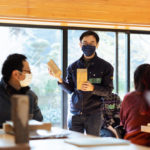
[Kumamoto/Tsunagi] 11/3 – Buddhist Statue Carving Workshop 「Let’s all make Tatzu Butzu!」 -

[Maker Spotlight] Kensuke of Aizome Kasuri Kobo -
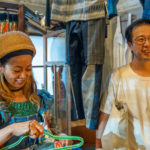
[Inspection Report] New Art Walk Tour in Beppu with Artist Katsu Masamitsu -
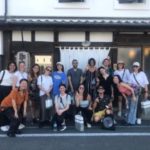
【Event Report】Royal College of Art Study Tour -
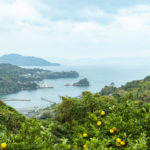
[Event Info] Meeting Master Citrus Farmers in Tsunagi! -

Company Visit Tour of Unagi no Nedoko / UNA Laboratories -
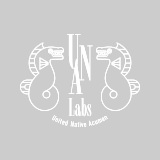
Response to the Current COVID-19 Pandemic
